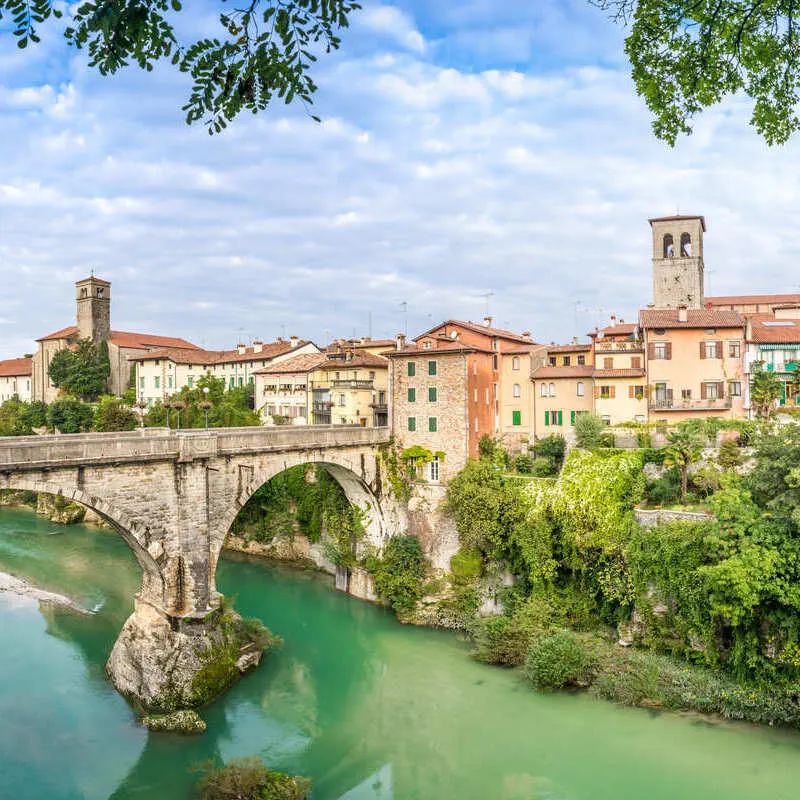At an age when the vast majority of destinations in Italy are struggling with overtourism and actively fighting to reduce arrival numbers, there is an incredible off path destination in the country’s northeast, on the top of the boot, that does not receive nearly as many guests and are now eager to nab a slice of the pie by paying for tourists to visit.
It sounds almost inconceivable that a country as overrun by tourists as Italy would even be considering such a generous offer, but the promotion of lesser-known provinces that are just as rich in culture and scenic might be the solution to Italy’s long-standing dilemma: how to openly discourage tourism when it’s become such an integral part of the economy?
Ladies and gents, behold Friuli Venezia Giulia and its world-class cities:
Is Friuli Venezia Giulia Worth Visiting?

A deceptively monotonous region in Italy’s Northeast, Friuli Venezia Giulia has had enough competition in previous decades to cause it to silently slip into the background while Adriatic tourism boomed. That’s understandable: the Alpine territory has historically bordered an ancient city-state that remains an economic powerhouse to this day: Venice.
The region of Veneto as a whole, home to Venice, boasts a whole league of historical towns and popular vacation destinations that have become iconic in Italy’s extensive landmark portfolio. When choosing Venice as a starting point, tourists normally tour other Veneti hotspots, like Padua, Verona, and Vincenza, not paying Friuli Venezia Giulia any mind.

In spite of carrying an influential middle name, Friuli Venezia Giulia has somehow always paled in comparison to neighboring Veneto’s wonders, the only other Italian province it borders. Within Italy, it faces heavy competition from what’s perhaps the world’s most romantic city break, but its low profile isn’t attributed to Italy’s maritime jewel’s affluence alone.
To the north, it’s cornered by the towering peaks of Austria, and to the east, it shares a border with the country of Slovenia, also coming close to touching the Westernmost tip of Croatia’s Istrian Peninsula. On all sides, it is flanked by some of Europe’s most breathtaking sights, yet it has somehow failed to assert itself as a major force of the Northern Adriatic, despite having its own array of European treasures.
This could be changing this year with immediate effect.

Free Train Travel Into The Province From Other Italian Cities
As reported by European media, this underrated province is willing to reimburse transportation fees for all those who visit, as long as their journeys originate from inside Italy. More specifically, PromoTurismoFGV, the local Tourism Office, is covering the cost of train travel between other Italian cities and four of Friuli Venezia Giulia’s top destinations.
Those are:
- Trieste
- Udine
- Grado
- Lignano Sabbiadore

Trieste and Udine are classed as cities and are some of the largest settlements in the province, while Grado and Lignano Sabbiadoro are quaint seaside towns that lack the crowds seen in places like Cinque Terre and Rimini. Out of those, the up-and-coming Trieste has arguably the best cultural offer.
Here is why:
The City With An Austrian-Hungarian Facade – And A Big Italian Heart

Markedly distinct from other cities in the peninsula, Trieste only became a part of a United Italy in the early 20th century. In spite of always having retained some form of Italian-speaking majority across its History, prior to the 1920s, Trieste was irrevocably a city in the now-defunct Austrian-Hungarian Empire, though its influence lives on.
Unlike Rome’s, or even the nearest competitor Venice’s, Trieste’s buildings are not traditionally ocher or vibrant-colored. They follow a Central European pattern of ornate facades, decorative ceramic tiles, and triple windows, while a large number of the city’s avenues were modeled after Vienna, the capital it once swore allegiance to.

Some of Trieste’s most famous attractions include the gorgeous Grand Canal, lined on both sides by buildings in the Austrian-Hungarian style, the Saint Spyridon Church, a Serbian Orthodox religious enclave that permanently ties Trieste to its Balkan-leaning past, and Piazza Unità d’Italia, the main square whose name couldn’t be more telling:
Unity of Italy Square.
What Requirements Must Be Met By Aspiring Visitors?
Tourists will be eligible for reimbursement of train tickets when traveling back and forth from other Italian hubs and the following stations in Friuli Venezia Giulia:
- Latisana-Lignano-Bibione
- Cervignano-Aquileia-Grado
- Trieste Airport
- Trieste Centrale
- Udine
Credit: Source link



